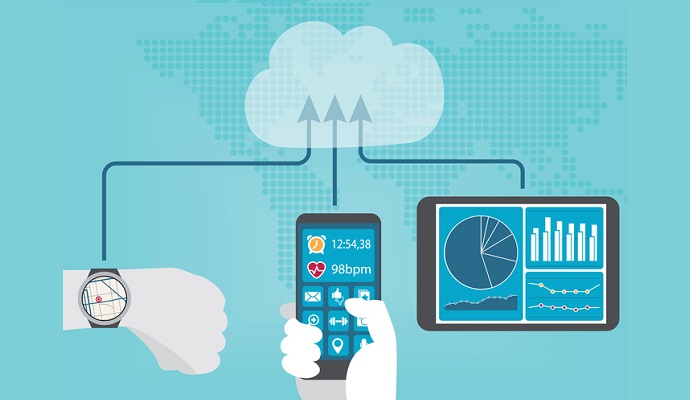Top 10 Remote Patient Monitoring Companies for Hospitals
The top remote patient monitoring platforms by vendors offer hospitals advanced chronic disease management features and capabilities.

Source: Thinkstock
- To enhance care delivery and improve patient outcomes for conditions that need constant surveillance, hospitals are increasing their use of remote patient monitoring solutions.
Integrated remote monitoring solutions with messaging and alert systems can let providers know when patients are in stable or critical conditions without the need for hospital room. Remote monitoring can improve the management of chronic diseases by measuring critical risk indicators such as glucose, blood pressure, etc. These devices can also provide patient-generated health data (PGHD) to physicians and keep patients informed on their health goals.
Healthcare organizations, particularly hospitals, can use remote monitoring to limit associated healthcare cost, and cut down on the use of more expensive services such as the ED. These facilities can expand their scope of service — and rest assured that patients are maintaining a healthy status.
The top ten remote monitoring vendors utilize enhanced healthcare metrics, patient messaging, mobile device integration, and in-home–focused monitoring solutions as indicated by various market reports. Vendors and monitoring solutions are listed in alphabetical order, and are not ranked in a particular way.
A&D Medical, Wellness Connected
READ MORE: Telepsychiatry Opens a New Window into Behavioral Healthcare
The suite of remote monitoring apps and devices allow patients to connect their health data with providers and keep family, caregivers, and medical professionals constantly updated on patient health. Devices such as a connected scale, wearable fitness tracker, connected blood pressure monitor, and a sleep tracker send data to providers and allows patients to graph and see how their health changes.
Biotronik, Biotronik Home Monitoring
The cardiac home monitoring tools offered by Biotronik aim to replace unnecessary doctor’s visits through early detection of cardiac health risks. Devices are equipped with an antenna and extra storage capacity that connects to a patient device called CardioMessenger. Through CardioMessenger, clinical data (e.g., vitals, health information) is collected, encrypted, and sent to a patient’s provider and categorized by importance based on a patient’s most pressing health needs.
Boston Scientific, Latitude NXT
The Latitude NXT in-home patient monitoring system allows a healthcare team to monitor connected devices in-between primary care visits. Devices send data to providers at regularly scheduled times from blood pressure monitors, pacemakers, cardiac monitors, weight scales, and other connected health devices. The NXT connector is hands-free, meaning that patients do not have to intervene to send health data.
READ MORE: Top 10 Healthcare Mobile Apps Among Hospital, Health Systems
Clear Arch Health, Genesis Touch
The Genesis Touch device collects biometrics from patients to remotely located providers, and transmits them to a patient management dashboard. The device can host video visits, allow multiple providers access to a patient’s vitals, and can be used with an optional 2-gigabyte data plan in lieu of a wireless network. The Genesis Touch also integrates with an oximeter, blood pressure monitor, and precision health scale.
GE Healthcare, Apex Pro CH
Apex Pro CH is a telemetry system offered by GE Healthcare that allows hospitals and other healthcare organizations to unify their monitoring systems under a single wireless network. Apex Pro allows facilities to centralize or decentralize monitoring as needed by an organization. Providers can monitor 438 patients under a coverage area, and allows access to vitals and other patient health data from multiple devices.
Medtronic, Vital Sync
Through the Vital Sync monitoring platform from Medtronic, providers can integrate physiological information from bedside monitors and wearable devices to a hospital server. Providers are able to set clinical protocols through mobile apps and devices, view patient information remotely, and receive alerts and updates to a mobile device. Vital Sync also offers the ability to remotely monitor spontaneous breathing trials, identify patient deterioration in the ICU, and transition from telemetry to surveillance monitoring.
Nihon Koden, Aware
Nihon Koden’s alarm management system allows hospitals to draw analytics from their monitoring parameters, and see detailed information about the types of patients and when patients experience health risks. Aware is intended to assist providers in identifying which alarms need the most attention based upon patient condition. Providers can also use the system to detect when alarms are on, off, have low battery life, and telemetry alarm responses.
Philips Healthcare, EncorePro 2
Providers can use the EncorePro 2 to have all a patient’s data presented in one convenient dashboard while automating routine sleep and respiratory settings. Changes in a patient’s health data or condition are automatically updated on a smartcard that immediately updates a provider on any changes. Another unique feature of the EncorePro 2 system is that providers can compare insurance, treatment, mask type, and provider referrals between patients to see the best approaches to improving patient outcomes.
Spacelabs Healthcare, Xhibit
The Xhibit remote monitoring platform allows providers to customize monitoring for specific patient needs through connected monitors, wearable health devices, and dashboards. With instant access to patient data, a provider is able to use a clinical suite to make data-informed decisions via monitoring-generated vitals, and determine if new care solutions are needed for said patient.
St. Jude Medical (Abbott), Merlin.net
The Merlin.net patient care network and the [email protected] transmitter enhances provider communication with remotely monitored patients through follow-ups in care available for home-use and during travel. The transmitter uses the care network to transfer health information to a doctor without a visit can monitor a device daily between visits. St. Jude is also offering 2017 updates in security to the Merlin.net platform to further protect patient health data.
Editor's note: A portion of this article was updated to specify changes in ownership.
